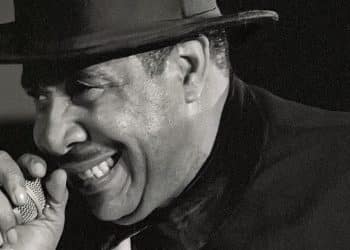Judas Priest is a pioneering and influential heavy metal band hailing from Birmingham, England. Formed in 1969, the band has become synonymous with the evolution and popularization of the heavy metal genre. The classic lineup, featuring Rob Halford (vocals), K.K. Downing (guitar), Glenn Tipton (guitar), Ian Hill (bass), and Scott Travis (drums), contributed significantly to shaping the sonic landscape of heavy metal.
Known for their powerful and operatic vocals, Rob Halford is often hailed as one of the genre’s most iconic and distinctive voices. The dual guitar harmonies of K.K. Downing and Glenn Tipton became a hallmark of Judas Priest’s sound, influencing countless metal bands that followed.
Judas Priest’s discography includes groundbreaking albums like “British Steel,” “Screaming for Vengeance,” and “Painkiller.” The band’s music often explores themes of rebellion, the occult, and fantasy, contributing to the development of the “leather and studs” aesthetic associated with heavy metal.
The song “Breaking the Law” and the anthemic “Living After Midnight” are among their most recognized tracks, showcasing the band’s ability to create both aggressive and melodic compositions. The album “Screaming for Vengeance” is often cited as a landmark release in the genre, solidifying Judas Priest’s status as metal legends.
Judas Priest has gone through lineup changes over the years, but the core elements of their powerful sound and stage presence have remained consistent. They are renowned for their electrifying live performances, marked by Halford’s soaring vocals and the intense energy of their dual guitar assault.
With a career spanning decades, Judas Priest’s influence on the heavy metal genre is immeasurable. They continue to be celebrated by metal enthusiasts worldwide, and their contributions to the evolution of heavy metal music have left an indelible mark on the genre’s history.
1. Breaking the Law
“Breaking the Law” is one of Judas Priest’s most iconic and enduring songs. Released in 1980 as a part of the album “British Steel,” the track became a signature anthem for the band and a classic in the heavy metal genre.
The song is known for its memorable opening riff, created by guitarists K.K. Downing and Glenn Tipton. Rob Halford’s powerful and distinctive vocals, combined with the energetic rhythm section, contribute to the song’s timeless appeal. The lyrics tell the story of a person feeling compelled to break the law, possibly due to societal pressures or personal struggles.
“Breaking the Law” achieved significant commercial success and helped Judas Priest reach a wider audience. The music video, featuring the band’s performance in a bank, added to the song’s popularity. The rebellious and anthemic nature of the track resonated with fans, making it a staple in Judas Priest’s live performances.
Over the years, “Breaking the Law” has been covered by various artists and featured in numerous movies, TV shows, and commercials, further cementing its status as one of the quintessential heavy metal songs. The track remains a highlight of Judas Priest’s extensive discography and continues to be celebrated by metal enthusiasts worldwide.
2. You’ve Got Another Thing Comin’
“You’ve Got Another Thing Comin'” is a classic heavy metal anthem by Judas Priest, released in 1982 as part of their album “Screaming for Vengeance.” The song is known for its powerful guitar riffs, energetic rhythm, and iconic chorus.
Musically, the track embodies the essence of classic heavy metal. It features driving guitar work, with memorable riffs and a thunderous rhythm section that creates an electrifying and intense atmosphere. Rob Halford’s soaring vocals add to the song’s energy, showcasing his vocal prowess and range.
Lyrically, “You’ve Got Another Thing Comin'” carries a message of resilience and defiance. The lyrics convey a sense of confidence and determination, with the message that no matter the challenges faced, the individual is ready to stand firm and overcome whatever obstacles come their way.
The song’s catchy chorus and powerful instrumentation made it a staple in Judas Priest’s live performances and a fan favorite. Its impact extended beyond the heavy metal genre, becoming a classic anthem for empowerment and perseverance. “You’ve Got Another Thing Comin'” remains a quintessential track in Judas Priest’s discography, embodying the spirit and intensity of classic heavy metal music.
3. Living After Midnight
“Living After Midnight” is one of Judas Priest’s signature songs, released in 1980 as part of their album “British Steel.” The track is an anthem of the rock and heavy metal genre, renowned for its infectious rhythm and catchy hooks.
Musically, “Living After Midnight” is a high-energy rock song driven by powerful guitar riffs and a pulsating rhythm section. The song’s upbeat tempo and memorable chorus make it a crowd-pleaser, often eliciting sing-alongs and enthusiasm from audiences.
Lyrically, the song celebrates the exhilaration and freedom of the nighttime. It captures the essence of the nightlife, with its references to staying up late, partying, and embracing the excitement of the midnight hours.
The track’s popularity stems from its accessible yet hard-hitting sound, making it a staple in Judas Priest’s live performances and a standout in their discography. “Living After Midnight” became a classic rock anthem that resonated with fans and solidified its place as one of the band’s most iconic and enduring songs.
4. Hell Bent for Leather
“Hell Bent for Leather” is a classic heavy metal anthem by Judas Priest, released as the title track of their 1978 album, which was alternatively titled “Killing Machine” in some regions. The song is a quintessential representation of Judas Priest’s energetic and rebellious style.
The track is notable for its driving guitar riffs, particularly the distinctive opening riff played by guitarists K.K. Downing and Glenn Tipton. Rob Halford’s powerful and versatile vocals add to the intensity of the song. Lyrically, “Hell Bent for Leather” celebrates the thrill and freedom of the open road and the rebellious spirit associated with heavy metal culture.
The album “Hell Bent for Leather” marked a transition for Judas Priest, incorporating more hard rock elements into their sound. The band’s adoption of leather and studs as part of their image, epitomized in the album cover, became an iconic representation of the heavy metal aesthetic.
The song has become a staple in Judas Priest’s live performances and is considered one of their classic tracks. The band’s influence on the heavy metal genre is evident in the enduring popularity of songs like “Hell Bent for Leather,” which continue to resonate with fans and inspire new generations of metal musicians.
5. Electric Eye
“Electric Eye” is a classic heavy metal song by Judas Priest, featured on their 1982 album “Screaming for Vengeance.” Written by the band’s vocalist Rob Halford, guitarist K.K. Downing, and guitarist Glenn Tipton, the song is renowned for its powerful riff, energetic pace, and vivid lyrics.
The song’s lyrics are often interpreted as a commentary on surveillance and the erosion of privacy, exploring themes of technology, government surveillance, and the potential for abuse of power. The “Electric Eye” serves as a metaphor for an all-seeing, omnipresent entity watching over society.
Musically, “Electric Eye” is characterized by its driving guitar riffs, Halford’s soaring vocals, and a strong rhythmic foundation. The guitar work by Downing and Tipton is particularly notable, contributing to the song’s intensity and impact. The instrumental section features a memorable dual guitar solo, showcasing the technical prowess of the guitarists.
“Electric Eye” has become one of Judas Priest’s signature songs and a fan favorite. It has been a regular inclusion in the band’s live setlists over the years. The song’s influence extends beyond the metal genre, and its themes continue to resonate in discussions about privacy and surveillance.
The success of “Electric Eye” contributed to the overall acclaim of “Screaming for Vengeance,” which became one of Judas Priest’s most commercially successful albums. The song’s enduring popularity underscores its status as a classic in the heavy metal canon.
6. Painkiller
“Painkiller” is a powerhouse track by Judas Priest, released in 1990 as the title song of their album “Painkiller.” It’s renowned for its ferocious speed, intense guitar work, and Rob Halford’s soaring vocals.
Musically, “Painkiller” is a quintessential example of the speed metal genre, featuring lightning-fast guitar riffs, blistering drumming, and a relentless tempo. The song showcases the technical prowess of the band, with intricate guitar solos and a thunderous rhythm section that creates an adrenaline-fueled atmosphere.
Lyrically, the song portrays a dark and apocalyptic theme, referencing a figure known as the “Painkiller” who arrives to save humanity from impending doom. The lyrics paint vivid imagery of a powerful and heroic character fighting against evil forces, embodying strength and resilience.
The track’s aggressive and fast-paced nature made it a standout in Judas Priest’s discography, gaining acclaim from both fans and critics. “Painkiller” remains a fan favorite and a defining song in the heavy metal genre, showcasing Judas Priest’s ability to deliver high-octane, adrenaline-pumping music.
7. The Hellion/Electric Eye
“The Hellion/Electric Eye” is a dynamic and iconic track by Judas Priest, appearing on their 1982 album “Screaming for Vengeance.” The song is actually a two-part composition, beginning with “The Hellion,” an instrumental piece that serves as an introduction to “Electric Eye.”
“The Hellion” sets the stage with its powerful and dramatic instrumental arrangement, featuring electrifying guitar work and an intense buildup that leads seamlessly into “Electric Eye.”
“Electric Eye” kicks in with driving guitar riffs and Rob Halford’s commanding vocals. Lyrically, the song explores themes of surveillance, technology, and the invasion of privacy. It delves into the idea of a powerful and intrusive entity watching every move, symbolized as the “Electric Eye.”
The combination of “The Hellion” and “Electric Eye” creates an electrifying and theatrical experience. The song is notable for its strong musicality, with memorable guitar riffs, a pounding rhythm section, and Halford’s powerful vocal delivery. It’s regarded as one of Judas Priest’s most iconic and influential tracks, showcasing their mastery of heavy metal and their ability to craft epic, anthemic songs.
8. Screaming for Vengeance
“Screaming for Vengeance” is the title track of Judas Priest’s eighth studio album, released in 1982. The song is a quintessential example of the band’s powerful and energetic heavy metal sound and is often regarded as one of their signature tracks.
The song features a driving rhythm, powerful guitar riffs, and Rob Halford’s soaring vocals. The lyrics convey a sense of rebellion and determination, with Halford singing about rising up against adversity and expressing a yearning for justice. The anthemic chorus, where Halford belts out the title, contributes to the song’s memorable and impactful nature.
“Screaming for Vengeance” is notable for its blend of traditional heavy metal elements and a more commercial sound, which helped broaden Judas Priest’s appeal. The album as a whole marked a successful period for the band, achieving commercial success and critical acclaim.
The iconic imagery associated with the album, including the menacing eagle on the cover, became synonymous with Judas Priest’s brand. The album also produced other notable tracks such as “You’ve Got Another Thing Comin'” and “Electric Eye,” solidifying its place in the pantheon of classic heavy metal albums.
“Screaming for Vengeance” remains a fan favorite and a staple in Judas Priest’s live performances. Its impact on the heavy metal genre is enduring, and the album’s success contributed significantly to Judas Priest’s status as one of the most influential and enduring bands in the history of metal.
9. Victim of Changes
“Victim of Changes” is a standout track by Judas Priest from their 1976 album “Sad Wings of Destiny.” It’s revered as one of the band’s most iconic and epic compositions.
The song itself is a medley of two separate songs: “Whiskey Woman” by Al Atkins (the band’s original vocalist before Rob Halford) and “Red Light Lady” by K.K. Downing and Al Atkins. Rob Halford reworked the lyrics and combined the songs into what became “Victim of Changes.”
“Victim of Changes” is known for its dynamic structure and powerful vocal performance by Halford, showcasing his wide vocal range and emotive delivery. The song traverses various musical moods, starting with haunting and melodic passages before escalating into aggressive and intense sections.
Lyrically, the song explores themes of heartbreak, despair, and personal struggle. It’s often interpreted as a reflection on the pain caused by a broken relationship, conveying a sense of anguish and torment.
The track’s intricate guitar work, Halford’s exceptional vocals, and its shifting dynamics make “Victim of Changes” a standout in Judas Priest’s catalog. It’s regarded as a masterpiece of the heavy metal genre, celebrated for its musical complexity and emotional depth.
10. Beyond the Realms of Death
“Beyond the Realms of Death” is a powerful and emotionally charged song by Judas Priest, featured on their 1978 album “Stained Class.” This track is often hailed as one of Judas Priest’s masterpieces and is regarded as a classic in the heavy metal genre.
The song was written by the band’s vocalist, Rob Halford, and guitarist, Les Binks. It is characterized by its dynamic shifts between acoustic and electric sections, showcasing the band’s musical versatility. The lyrics delve into themes of despair, inner turmoil, and the desire for escape, creating a poignant and introspective atmosphere.
Rob Halford’s vocal delivery is particularly notable in “Beyond the Realms of Death,” as he conveys a deep emotional intensity that complements the somber tone of the song. The guitar work, led by Glenn Tipton and K.K. Downing, adds to the song’s impact, with memorable riffs and a haunting solo.
The song has become a fan favorite and is often praised for its musical complexity and emotional depth. “Beyond the Realms of Death” stands out as an example of Judas Priest’s ability to transcend the traditional boundaries of heavy metal, exploring more intricate and emotive musical territories.
Over the years, the song has retained its significance and is frequently included in the band’s live performances. Its enduring popularity underscores its status as a timeless classic within the Judas Priest catalog.









